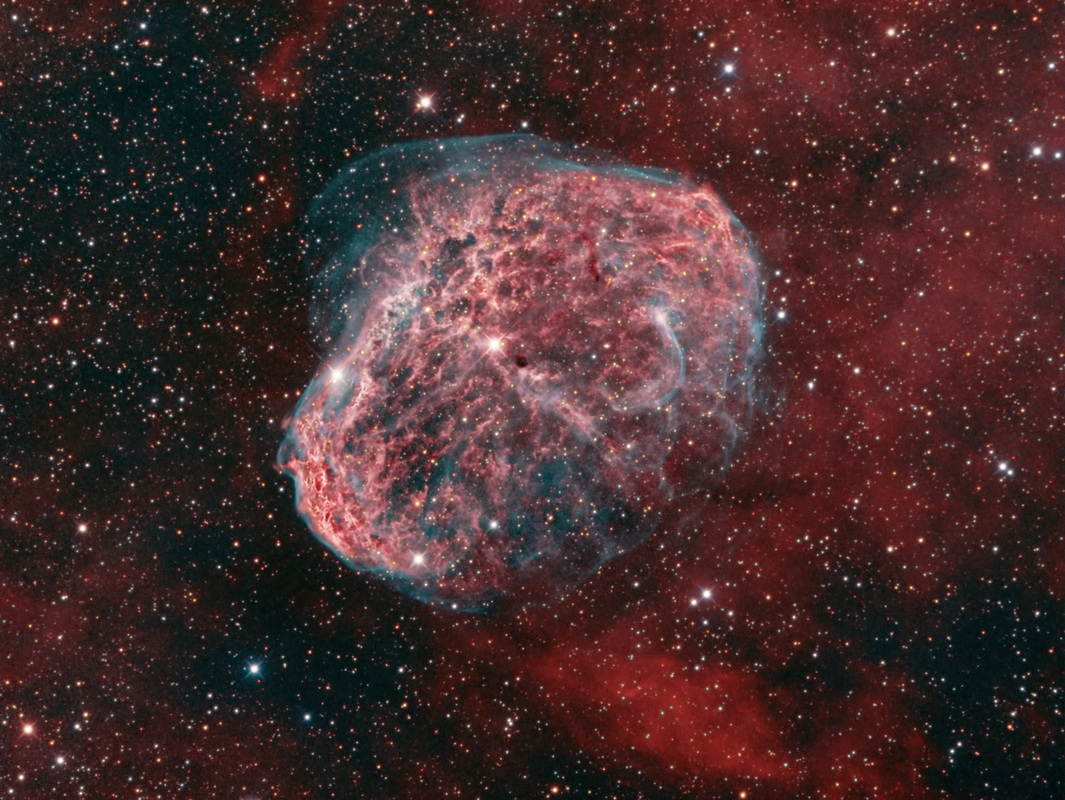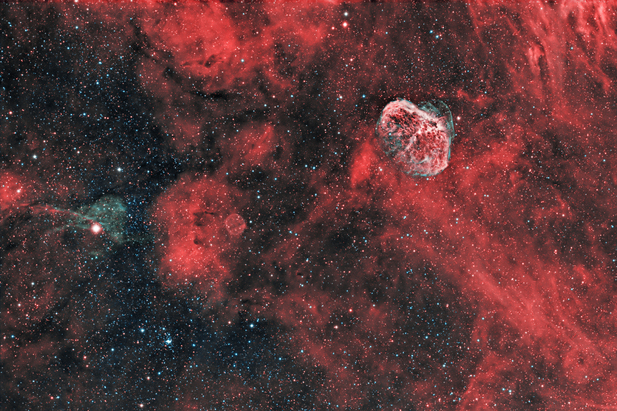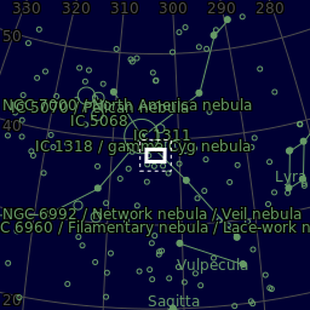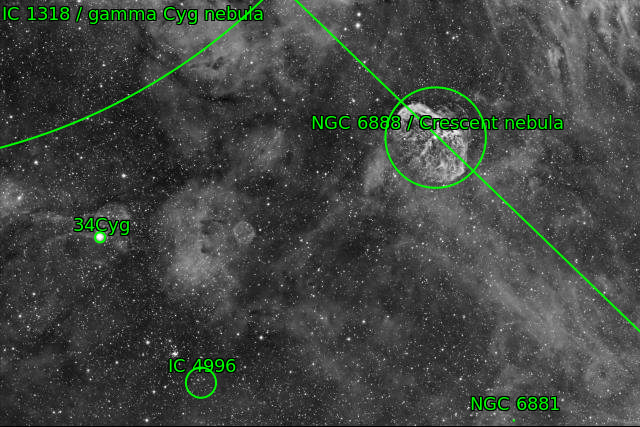NGC6888 - The Crescent nebula
|
The Crescent Nebula (also known as NGC 6888, Caldwell 27, Sharpless 105) is an emission nebula in the constellation Cygnus, about 5000 light-years away. It was discovered by Friedrich Wilhelm Herschel in 1792. It is formed by the fast stellar wind from the Wolf-Rayet star WR 136 (HD 192163) colliding with and energizing the slower moving wind ejected by the star when it became a red giant around 250,000 to 400,000 years ago. The result of the collision is a shell and two shock waves, one moving outward and one moving inward. The inward moving shock wave heats the stellar wind to X-ray-emitting temperatures.
|
Details
M: Mesu 200
T: Orion Optics ODK10
C: QSI683 with 3nm Ha and OIII filter, Baader RGB filters
50x1800s in Ha
51x1800ss in OIII
15x300s in each RGB
Total exposure time 54hrs 15 mins
M: Mesu 200
T: Orion Optics ODK10
C: QSI683 with 3nm Ha and OIII filter, Baader RGB filters
50x1800s in Ha
51x1800ss in OIII
15x300s in each RGB
Total exposure time 54hrs 15 mins
The Crescent nebula and PN G75.5+1.7 (the Soap Bubble) in a wider field
|
Details
M: Avalon Linear fast reverse T: Takahashi FSQ85 0.73x C: Atik 460EXM 3nm Ha and OIII filter 10x1800s Ha 14x1800s OIII Total integration time - 12 hours. |
The Soap bubble nebula, or PN G75.5+1.7, is a planetary nebula. The nebula was independently noted and reported to the International Astronomical Union on July 17, 2008. It is located to the left of the middle of the frame in this image.
|




